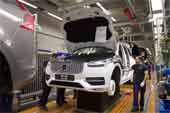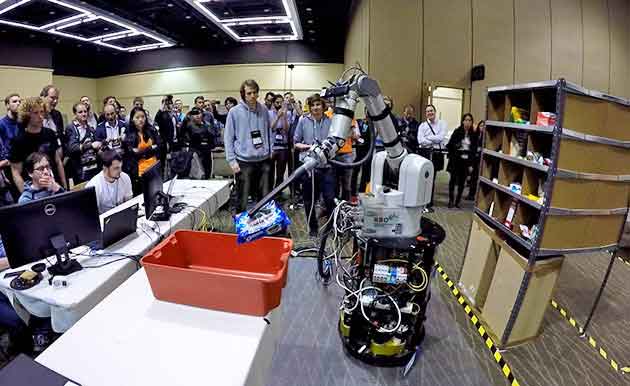| |
|
| |
|
 |
Supply
Chain by the Numbers |
| |
|
| |
- June 3, 2015 -
|
| |
|
| |
|
| |
|
| |
Union Battle Likely at Coming New Volvo Plant; Disappointing US GDP Growth Ceiling? Amazon Root Picking Contest; Questioning Value of Ever Larger Container Ships |
| |
|
| |
| |
| |
2000 |

|
|
|
| |
| |
|
10
|
 |
That was the number of items ranging from a rubber ducky to pencils to a small pack of Oreo cookies that the robot of the winning team was able to successful pick out of 12 total items during last week's "Amazon Picking Challenge" contest in Seattle. The task required the robots to grab each item from some static shelving and place it in a nearby tote. The winning robot was developed by a team Technical University of Berlin, which like everyone else used commercially available devices such as robotic arms as a platform, to which it added its own software controls and grabber mechanisms. In second place was a team from MIT that was able to pick and place 7 of 12 items. Picking items off shelves in an "unstructured environment" has to date defied automation, Amazon said. BTW, it took the winning robot about 20 minutes to do the job. |
| |
| |
|
| |
| |
60% |
|
That's the share of total per container cost savings touted by container shipping lines that are coming simply from more fuel efficient engines, not from the increased scale, according to a new report from the International Transport Forum, and arm of the Organization for Economic Co-operation and Development (OECD). The gist of the report is that the savings from ever larger ships - with the most recent designs capable of carry some 20,000 twenty-foot equivalent units (TEU) - is showing diminishing returns, and that the end savings to shippers and importers may not even materialize because of the havoc the megaships are having on port operations across the globe and other factors, calling on regulators and policy makers to take a more balanced view. We'll note Maersk Line disputes some of the findings, saying recent cost gains are larger than calculated by the ITF.
|
| |
| |
|
|
|
| |
 |
 |
| |
|
|
| |